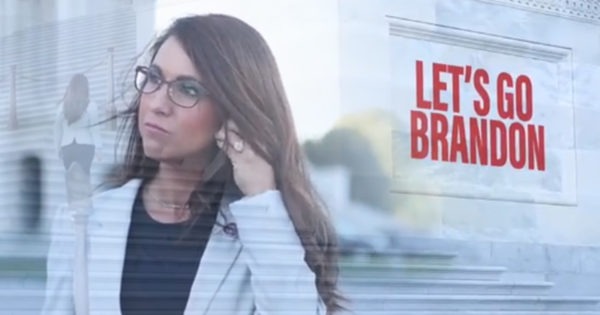
Rep. Lauren Boebert released a video showing her listening to rapper Bryson Gray’s new “Let’s Go Brandon” song that has managed to become the number one song on the charts despite being banned on YouTube and the artist previously being censored by Spotify.
The Let’s Go Brandon meme began when a reporter claimed to misunderstand a “f**k Joe Biden” chant as “let’s go Brandon” and has since become a euphemism used to support anger toward the historically unpopular White House resident.
“#1 for a reason,” wrote Boebert on social media alongside the video showing her adorn Apple Airpods playing the music. Boebert begins smiling as the music plays. The video attracted the attention of Gray, who replied, “This is so lit!”
#1 for a reason. pic.twitter.com/uYH7xcPX8b
— Rep. Lauren Boebert (@RepBoebert) October 29, 2021
Gray’s “Let’s Go Brandon” shot to the top of the iTunes charts, replacing music legend Adele’s “comeback single ‘Easy On Me,’” according to the New York Post. This happened despite Gray’s video for the track being banned by YouTube.
“If you read guidelines for social media sites now, the guidelines themselves are against conservatism. You literally can’t have a conservative opinion,” Gray said. “Like I can’t say there are only two genders, or I can’t call somebody by what they are. I have to be delusional with them.”
Another user uploaded the viral song after Gray’s video was removed, and the video already has nearly 20,000 views.
Gray first shot to prominence in right wing circles when he began wearing an over-sized Make America Great Again hats at pro-Trump rallies and events. Last year, Gray released a music video featuring him wearing the hat. It has since attained over 1.3 million views on YouTube.
The rapper later started the “MAGA Challenge” which encouraged social media users to upload their own vocals to a pro-Trump rap song released by Gray. President Donald Trump supported the contest via his Twitter account.
Earlier this year, Spotify censored Gray over a video he released called “Safe Space.” As National File reported, “After several emails, Gray received another response from Spotify, informing him that the track had been banned from their service, and refusing to elaborate further. Instead, Spotify suggested Gray contact his music distributor. When Gray attempted to contact TuneCore, his music distributor, the representative told him ‘they don’t give us specific reasons’ in ‘an automated message.’”